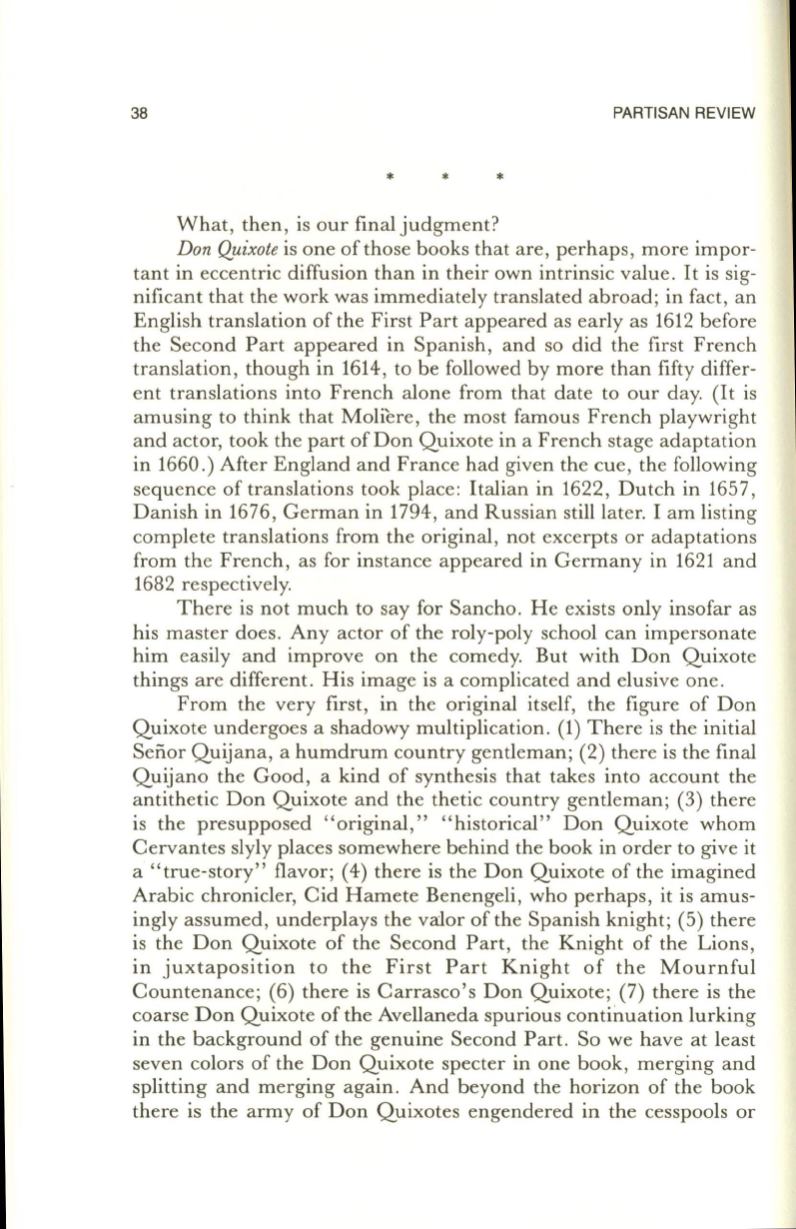
38
PARTISAN REVIEW
*
*
*
What, then, is our final judgment?
Don Quixote
is one of those books that are, perhaps, more impor–
tant in eccentric diffusion than in their own intrinsic value.
It
is sig–
nificant that the work was immediately translated abroad; in fact, an
English translation of the First Part appeared as early as 1612 before
the Second Part appeared in Spanish, and so did the first French
translation, though in 1614, to be followed by more than fifty differ–
ent translations into French alone from that date to our day.
(It
is
amusing to think that Moliere, the most famous French playwright
and actor, took the part of Don Quixote in a French stage adaptation
in 1660 .) After England and France had given the cue, the following
sequence of translations took place: Italian in 1622, Dutch in 1657,
Danish in 1676, German in 1794, and Russian still later. I am listing
complete translations from the original, not excerpts or adaptations
from the French, as for instance appeared in Germany in 1621 and
1682 respectively.
There is not much to say for Sancho . He exists only insofar as
his master does. Any actor of the roly-poly school can impersonate
him easily and improve on the comedy. But with Don Quixote
things are different. His image is a complicated and elusive one.
From the very first, in the original itself, the figure of Don
Quixote undergoes a shadowy multiplication. (1) There is the initial
Senor Quijana, a humdrum country gentleman; (2) there is the final
Quijano the Good, a kind of synthesis that takes into account the
antithetic Don Quixote and the thetic country gentleman; (3) there
is the presupposed "original," "historical" Don Quixote whom
Cervantes slyly places somewhere behind the book in order to give it
a "true-story" flavor; (4) there is the Don Quixote of the imagined
Arabic chronicler, Cid Hamete Benengeli, who perhaps, it is amus–
ingly assumed, underplays the valor of the Spanish knight; (5) there
is the Don Quixote of the Second Part, the Knight of the Lions,
in juxtaposition to the First Part Knight of the Mournful
Countenance; (6) there is Carrasco's Don Quixote; (7) there is the
coarse Don Quixote of the Avellaneda spurious continuation lurking
in the background of the genuine Second Part. So we have at least
seven colors of the Don Quixote specter in one book, merging and
splitting and merging again. And beyond the horizon of the book
there is the army of Don Quixotes engendered in the cesspools or


